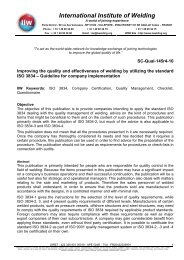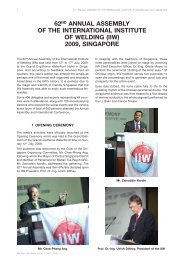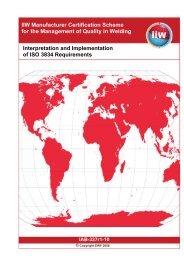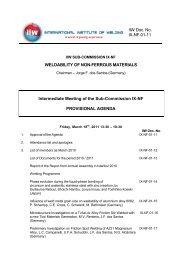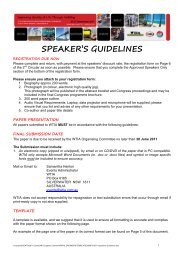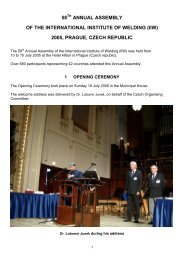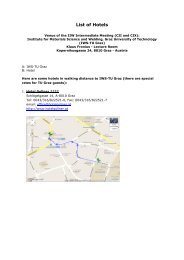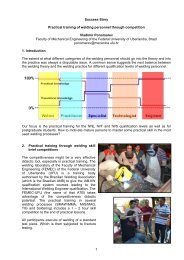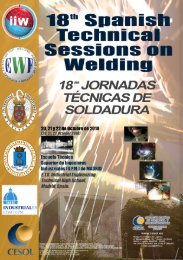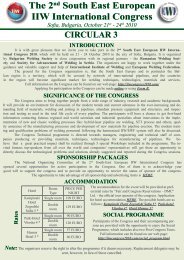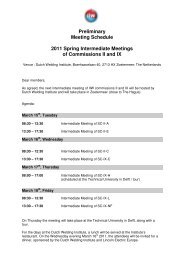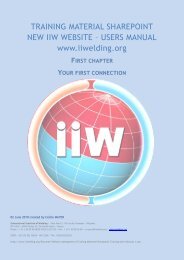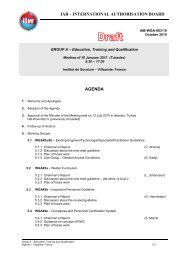2010 - IIW
2010 - IIW
2010 - IIW
Create successful ePaper yourself
Turn your PDF publications into a flip-book with our unique Google optimized e-Paper software.
Fracture toughness properties of such bi-material<br />
interfaces were determined using SENB specimens<br />
notched at various locations at the vicinity of the bimaterial<br />
interface. The initial notch was located at the<br />
interface (I), ferrite (F) and austenite (A) materials with<br />
constant distance to the interface. Figure 16 is showing<br />
the load vs. CMOD curves obtained from various<br />
specimen types, which are schematically shown with<br />
obtained respective curve. The specimen with<br />
interfacial crack shows immediate effect of higher<br />
strength ferrite material by having higher load carrying<br />
capacity. However, most striking effect of lower<br />
strength material on the fracture toughness of ferrite<br />
material is to prevention (orange colour curve) of<br />
unstable fracture phenomena which is the intrinsic<br />
property of the ferrite (red curve). It appears that the<br />
critical stress state needed for a brittle or unstable crack<br />
initiation is not reached by relaxation of the crack tip<br />
stress by remote plasticity within the austenite.<br />
Accompanying numerical investigations of this bimaterial<br />
system was conducted in France has also<br />
materialised these results. These test results have shown<br />
significant effect of the material properties of<br />
neighbouring zone adjacent to the interface.<br />
Figure 17. Macro section of the sub-interface crack tip (located<br />
into the ferritic-F- steel side of the interface) and strong crack<br />
path deviation towards lower strength (but toughnes) austenitic-<br />
A- material. The figure is also schematically showing the<br />
development of heterogeneous plastic zone at the interface region.<br />
Unstable deformation behaviour of all-ferrite specimen<br />
(shown in red colour curve) becomes stable once<br />
specimen contains soft (lower strength) austenite<br />
material, as orange colour curve demonstrates.<br />
Figure 16. Load vs. CMOD curves of SENB specimens containing bi-material interface. Notch locations were varied, where blue colour SENB<br />
specimen (HoBP-F-7) representing all-ferrite homogeneous specimen while white coloured specimen (HoBP-A-4) refers to all austenite<br />
material.



